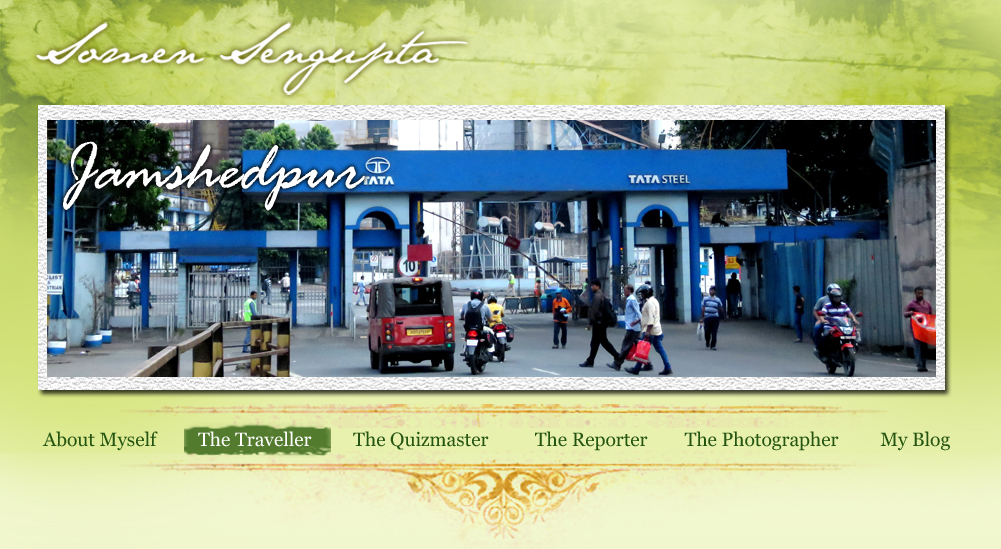| NOT JUST A SIMPLE STORY OF STEEL |
|
The history behind the making of Jamshedpur is not a mere success story of one man or one company, it is a lesson in responsibility for all dreamers, writes Somen Sengupta.
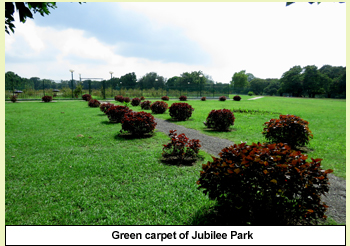 The man from Navsari, an ordinary small town in Gujarat, was in no way an ordinary man himself. After establishing a new textile mill in Nagpur in 1877, he was just at the threshold of making history for himself and for his nation as well. Inspired by a speech of famous Scottish historian Thomas Carlyle in England, this middle-aged Parsi man thought of an idea that no one in Asia had ever thought of before. The line was, “A country that produces steel has gold.” It stayed in his mind and opened the doors to a dream that one day became a reality and made his name significant to the history of India’s modern times. India’s history of industry and commerce will never be complete without dedicating a chapter this man.
The man from Navsari, an ordinary small town in Gujarat, was in no way an ordinary man himself. After establishing a new textile mill in Nagpur in 1877, he was just at the threshold of making history for himself and for his nation as well. Inspired by a speech of famous Scottish historian Thomas Carlyle in England, this middle-aged Parsi man thought of an idea that no one in Asia had ever thought of before. The line was, “A country that produces steel has gold.” It stayed in his mind and opened the doors to a dream that one day became a reality and made his name significant to the history of India’s modern times. India’s history of industry and commerce will never be complete without dedicating a chapter this man.
Jamsetji Nusserwanji Tata took a voyage to America to understand how the steel industry works there. On his way to America, in the same ship he met and interacted with a young Bengali monk named Swami Vivekananda who left a profound impact on his heart, such that the motive of profit and the desire of ensuring general welfare found a well-negotiated yet peaceful coexistence in his mind forever.
Back home, he found things to be very tough in India where its colonial rulers had no sympathy for any Indian business enterprise. So, his effort to set up a steel plant in India ran through many rough weathers including doubt and abuse. Everyone had simply accepted that steel cannot be made in India by an Indian businessman. But, this man refused to give up. He consulted PN Bose, the first Indian graded officer in the Geological Survey of India, to scout a place which will be ideal for a steel factory and a township under its shadow. Though initially a place near Mayurbhanj in Orissa was considered but after lot of research a place at the confluence of Subarnarekha and Kharkal in Bihar was selected. The location was finalised by CM Weld and Srinivasa Rao in the Chota Nagpur Plateau of Bihar. It was deeply forested in tribal areas with wild animals frequenting every then and now. The place was found with few hamlets and no motorable roads and electricity when Tatas landed there from Bombay. It was situated near a rail head named Kalimati. Known as Sakchi, it made history.
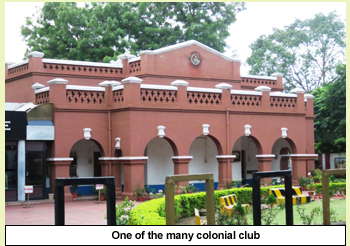 It was a master stroke as a location. It was rich in coal in north and iron in south. In the west, a big city and port like Calcutta gave it a huge logistical advantage. From the beginning, the place was grown as a multi-cultural cosmopolitan one with the principle of pluralism. Engineers from America, Germany and Great Britain arrived here to construct blast furnaces, steel work of the factory and rolling mills with a sizeable number of Australians, Italians, Swiss and Chinese who arrived here for other jobs. Tata had a clear idea that along with a steel factory, a great planned township will also come up with all modern facilities including social clubs to places of worship. An American named Julian Kennedy got the job of town planning and what he executed in early 20th century can only be described as a masterpiece. It was a master stroke as a location. It was rich in coal in north and iron in south. In the west, a big city and port like Calcutta gave it a huge logistical advantage. From the beginning, the place was grown as a multi-cultural cosmopolitan one with the principle of pluralism. Engineers from America, Germany and Great Britain arrived here to construct blast furnaces, steel work of the factory and rolling mills with a sizeable number of Australians, Italians, Swiss and Chinese who arrived here for other jobs. Tata had a clear idea that along with a steel factory, a great planned township will also come up with all modern facilities including social clubs to places of worship. An American named Julian Kennedy got the job of town planning and what he executed in early 20th century can only be described as a masterpiece.
Soon, a city around Tata steel factory gradually developed with all modern amenities. However, the journey was not an easy one. Jamsetji did not live long enough to see some of this. His son Dorabji Tata finally started the factory in 1907 but production started only on February 16, 1912. From the beginning, it faced a grave challenge. Even the Government of India and Indian Railways insisted on British Standard Specification Steel (BSSS) which was much higher in quality and much more expensive than Non-British Standard Specific Steel. To remain in competition, Tata took the challenge of producing BSSS by cutting down its margin and losing a huge market outside the British Kingdom where other suppliers were supplying NBSSS at a cheaper rate.
However, from that 1,700 acre of factory with only 15,000 tonnes of steel production capacity, the Tata factory started its golden run without knowing how one day it will be an inspirational story.
The factory gave such a good supply to the British Government during World War I, that after the war, Viceroy Lord Chelmsford visited the town of Sakchi in January 1919 and renamed it as Jamshedpur after Jamsetji Tata. Before this, no Indian town had ever been named after an Indian industrialist. This is the background story of Jamshedpur which is now 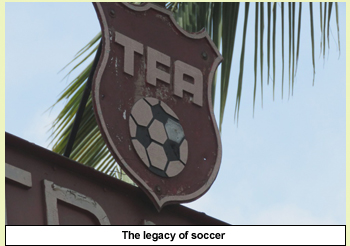 India’s only city of 10 million plus population without any municipality. It is the city which is modern in planning and decorated with a rich legacy of heritage. It is Indian in character but colonial often colonial in appeal. India’s only city of 10 million plus population without any municipality. It is the city which is modern in planning and decorated with a rich legacy of heritage. It is Indian in character but colonial often colonial in appeal.
Jamshedpur is still an example of how the industrial growth of a region can enable the healthy growth of a city. It is also a perfect blend of the economic growth of an organisation with its people. In 1940, Otto Koenigsberger, an architect engineer, was appointed by the Tatas to do the gardening and landscaping. What he rendered is now known as Jubilee Park, one of the best planned parks at the heart of the city with a huge lake and various kind of balanced entertainment. The green patch and tall trees around the lake is so nature friendly that today it is a natural home of many kinds of birds including pond heron, Indian stone curlew, kingfisher, coppersmith barbet, etc. The park at a glance can be mistaken with any European township with leafy and shadowed boulevard. The blooming flowers, fountains and green carpet of grass all around this park is a gem of any planned city.
The most famous iconic building of the city is Regal Mansion, built in 1936 by Khurshid Maneckji Bharucha, the first Indian chief cashier of Tata Steel. This building, made of colonial style typical to in Calcutta or Bombay was once the first home of anybody who came to Jamshedpur for work. Almost at the same time, in 1940, the first organised hotel of Jamshedpur named Boulevard Hotel came up. It was set up by John Dcosta with exceptional design. It was home to several American and British soldiers during World War II. Tata Main Hospital, the oldest hospital of the city, came in 1908, five years before of its first production of steel. It means before earning a single rupee from this town, Tata gifted its first hospital to its people.
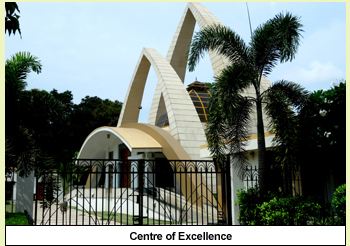 With the commencement of production of steel in 1912, the city promptly attracted people from all across India and the world. Thus a pure cosmopolitan culture developed here with social club, hotel, café, sports ground, church, golf course, library and needless to say several market and buildings. Impossible it seems but the fact remains that with solid support from Tata group multiple social clubs came up here offering various facilities to both Indians and foreigners. Some of the iconic clubs like United Club, Beldih Club, Golmuri Club etc are still active with their colonial club houses aptly decorated with vintage furniture and grandfather clocks on the wall. Clubs which were earlier meant for Tata employees only are now open to the public. Established in 1913, United Club was earlier known as Tata Institute. The impressive, Gothic-style building has seen titans of Indian politics and industry as its honoured guests. With the commencement of production of steel in 1912, the city promptly attracted people from all across India and the world. Thus a pure cosmopolitan culture developed here with social club, hotel, café, sports ground, church, golf course, library and needless to say several market and buildings. Impossible it seems but the fact remains that with solid support from Tata group multiple social clubs came up here offering various facilities to both Indians and foreigners. Some of the iconic clubs like United Club, Beldih Club, Golmuri Club etc are still active with their colonial club houses aptly decorated with vintage furniture and grandfather clocks on the wall. Clubs which were earlier meant for Tata employees only are now open to the public. Established in 1913, United Club was earlier known as Tata Institute. The impressive, Gothic-style building has seen titans of Indian politics and industry as its honoured guests.
In 1936, Rotary Club of Jamshedpur was established by Herbert Bryant. Out of the three almost century old churches the oldest one is St George Church which was built in 1916. However, in architectural beauty, Beldih Church of 1923 and St Mary of 1926 are more notable. However, without any direct support of Tata, these were built to tap the ever-growing Christian population of the town. The city never got stuck in the past and with the pace of time, iconic structures came up in new form. One such structure is the Centre For Excellence, a compact centre housing a world class museum and art gallery. Set up in 1992, this was designed as India’s first well organised archive of any business house.
It is an amalgamation of several social and cultural organisations of Jamshedpur under one roof where they can work together and deliver together. The architecture of the centre is such that it covers a large area with different level of gardens, pillars and pyramids. The art gallery section contains rare paintings of MF Husain and cartoons by RK Laxman. It also has a rich collection of contemporary greats like Jatin Das and Anjolie Ela Menon.
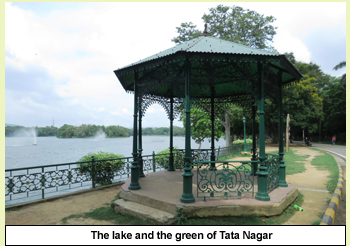 The founder’s gallery is a section dedicated to the life of Jamsetji and the history of this city. Loaded with rare photographs, original letters, documents, deeds and artifacts this is a museum of distinction by every merit. A separate section is an archive of Tata Steel itself that includes maps and reports. It is a living demonstration of India’s industrial development in 20th century. The founder’s gallery is a section dedicated to the life of Jamsetji and the history of this city. Loaded with rare photographs, original letters, documents, deeds and artifacts this is a museum of distinction by every merit. A separate section is an archive of Tata Steel itself that includes maps and reports. It is a living demonstration of India’s industrial development in 20th century.
Another museum that one should not miss here is the Tribal Cultural Centre. It covers rich yet unknown tribal cultures of the region with models and display exhibits. In 1940s, an Austrian artist named Walter Langhammer took shelter in India to escape the tyranny of Naziism. Within his three months stay in Jamshedpur, he established Jamshedpur School of Art in 1946. This was one of the oldest cultural institutes of the city and still running.
No Jamshedpur story is complete if its emotional attachment with football is not mentioned. It is to note that in a letter written to his son Dorabji Tata in 1902 when he was still dreaming to set up a new city around a steel plan Jamsetji wrote “Be sure to lay wide streets with shady trees. Be sure that there is plenty of space for lawns and gardens. Reserve large areas for football, hockey and parks. Earmark areas for temples, mosques, and churches.”
This vision of this businessman even before having any profit from his business was in no way ordinary. Tata’s commitment to sports can only be best described in establishing Tata Football Academy in 1987 was the first well planned football grooming school of India. In the past 30 years, TFA has given super quality footballers to India. The city’s love for football was proved again recently when Jamshedpur FC, a full-fledged football club, was funded and supported by Tata with world class facility in training and grooming. Today, Jamshedpur is a roaring industrial hub co-habited by giants like Tata Steel, Tata Power, TCS, Tinplate Co, Lafarge cement, and Tata Motors. From the same 1,700 acres of land, now Tata Steel produces 10 million tonnes of steel.
This article was published in The Pioneer on 11th November 2018
Click here to view the original article
|
